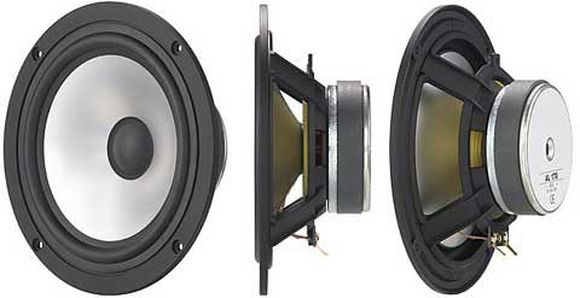2. Overview
There is a bewildering variety of speakers to choose from. Each manufacturer produces ranges to suit all kinds of uses and budgets, including active speaker systems with built-in amplification, passive monitors, and huge horns. All speakers, however, apply the same principles in their basic function.

A typical driver
Probably the most familiar type of speaker is the cone driver, in which a cone-shaped diaphragm is attached to a voice coil with a magnet hanging behind it. The electrical signals reaching the driver cause the coil to move backwards and forwards through the magnetic field, in turn causing the cone to push sound waves through the air.
Drivers like these are generally measured by their diameter, the rule being that the larger the diameter of the driver, the more low frequency tones it will produce. Small speakers are therefore used for high frequencies, mid-sized speakers handle the mid-range sound, and large speakers deliver the bass. Were in the realm of applied physics here - the lower the frequency, the longer the sound wave, and the harder it is to push the sound through the air. Just as you need a big paddle to move a large boat, you need a big cone to move a big sound.
How big?
Generally, speaker diameters are measured in inches. The most widely used sizes are 12" (30 cm), 15" (38 cm), and 18 (46 cm). In practice, the dimensions used when installing a speaker may be different, but most standard specifications refer to the maximum diameter of the driver.
Some speakers feature a bonded second cone which adds strength for high and mid-range frequencies. These are often used for multiple speaker systems and stage monitors because they can handle a broader range of frequencies.



